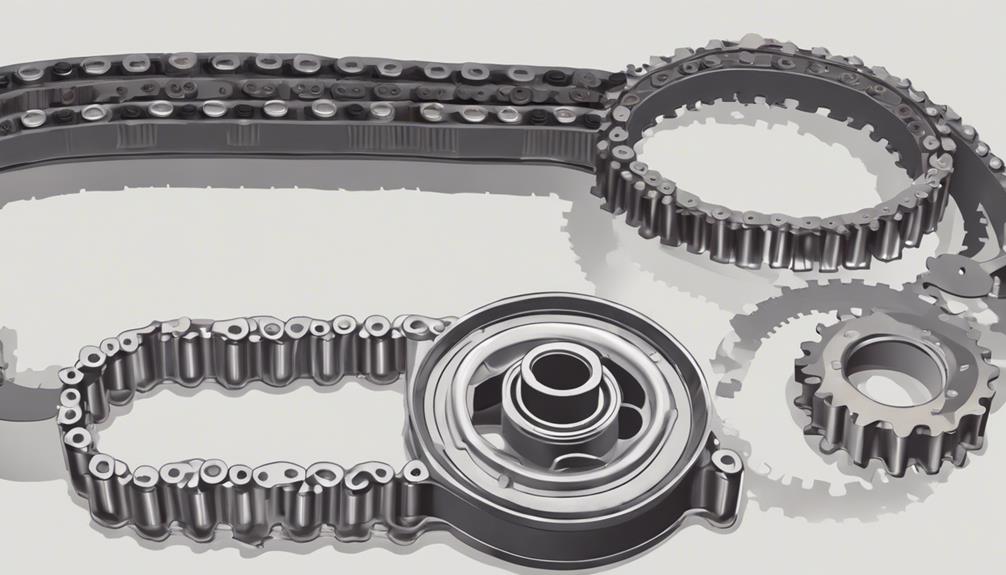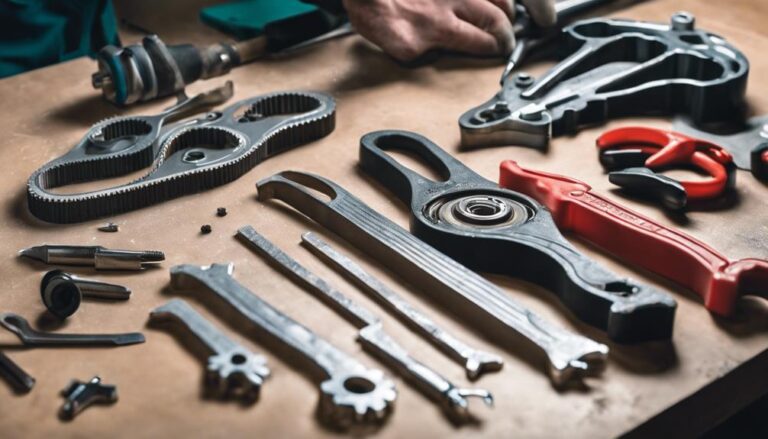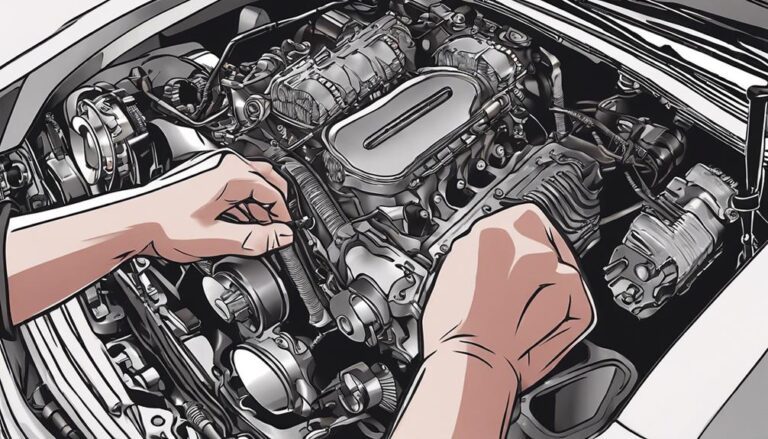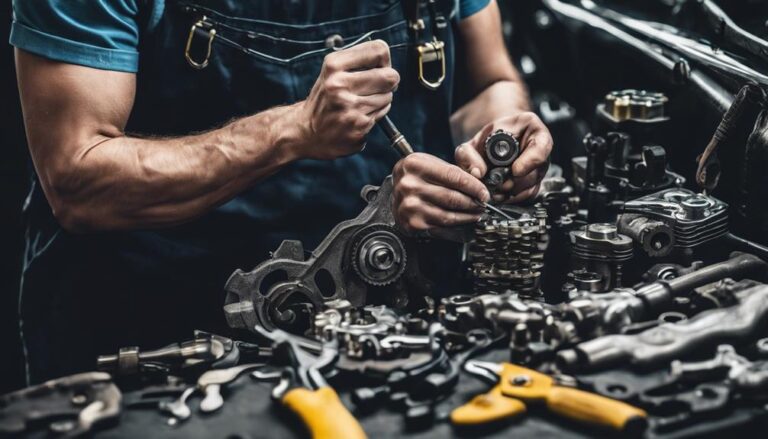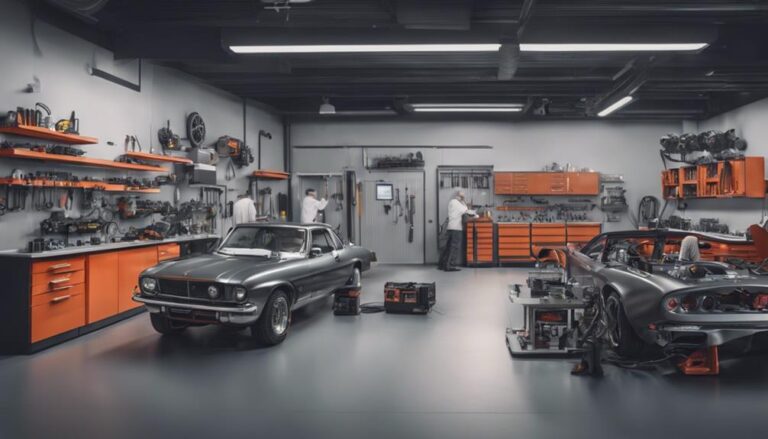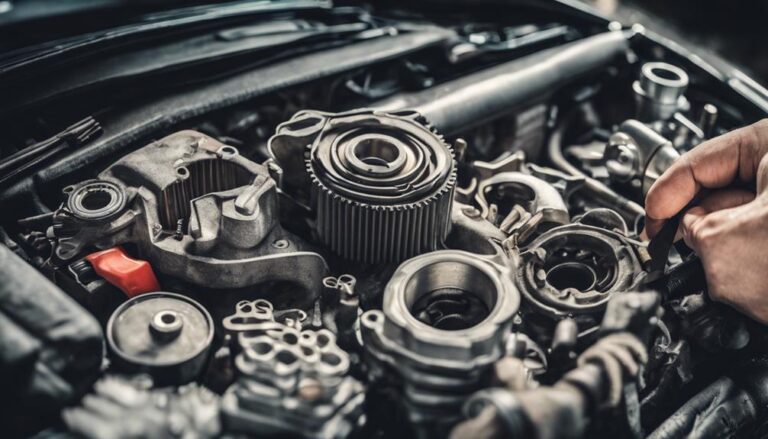Why Choose Timing Belt Over Timing Chain?
When it comes to the choice between a timing belt and a timing chain, imagine the quiet hum of efficiency versus the sturdy tick of reliability. One offers a hushed operation, while the other boasts longevity without sudden surprises.
But why should you opt for the former over the latter? The answer lies in a delicate balance of factors that may sway your decision one way or the other.
Let's explore the nuances that make the timing belt a contender in the realm of automotive precision and performance.
Key Takeaways
- Noise reduction and enhanced driving comfort.
- Cost efficiency and potential water pump replacement.
- Slip-resistant engagement for precision and reliability.
- Cost-effective with accurate engine timing and savings.
Pros of Timing Belt Over Chain
When considering the advantages of a timing belt over a timing chain, it becomes evident that several key factors make the timing belt a superior choice in certain circumstances.
One significant benefit of timing belts is noise reduction. Timing belts are generally quieter in operation compared to timing chains, providing a smoother and more peaceful driving experience. This noise reduction can enhance the overall driving comfort and cabin ambiance, a desirable feature for many drivers.
Furthermore, timing belts offer efficiency and cost savings. They're cheaper to manufacture than timing chains, making them more cost-effective for certain vehicles. The lighter and less complex nature of timing belts also contributes to efficiency, simplifying engine design and potentially improving fuel consumption.
Additionally, some engines are specifically optimized to work with timing belts, leading to better performance outcomes. This optimized performance can translate to a more responsive engine, increased power output, and overall improved driving dynamics. Hence, choosing a timing belt over a timing chain can offer a range of benefits in terms of noise reduction, efficiency, cost savings, and performance.
Cons of Timing Belt Over Chain
Transitioning from the advantages of timing belts to their drawbacks, the cons of choosing a timing belt over a timing chain become apparent when considering factors like maintenance requirements and durability. When opting for a timing belt, you may encounter the following drawbacks:
- Cost Efficiency: Timing belts need replacement more frequently than timing chains, leading to higher maintenance costs over the lifespan of the vehicle.
- Engine Longevity: The risk of sudden belt failure in timing belts can result in severe engine damage, impacting the longevity of the engine compared to the more durable timing chains.
- Maintenance Demands: Regular upkeep is essential for timing belts to prevent unexpected failures, making them less convenient for those seeking a low-maintenance option for long-term engine health.
Considering cost efficiency and engine longevity, timing chains offer a more durable and cost-effective solution, requiring less frequent replacements and providing better peace of mind regarding engine reliability.
Timing Belt Replacement Advantages
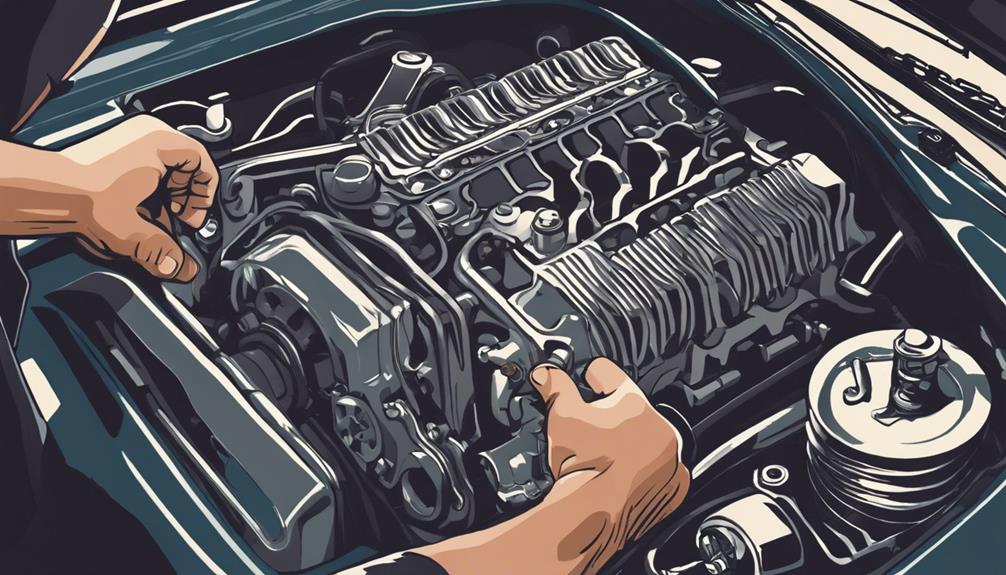
Timing belt replacement offers several advantages over timing chain replacement, making it a cost-effective and efficient maintenance option for your vehicle. The table below highlights the key benefits of opting for timing belt replacement:
| Advantages | Description |
|---|---|
| Cost Efficiency | Timing belt replacement is generally more affordable, costing around £300 on average, a cheaper alternative to chains. |
| Reliability | The installation of a timing belt kit ensures all necessary components are included, enhancing overall system reliability. |
| Precision | Timing belts provide slip-resistant engagement, contributing to precise engine timing, vital for optimal performance. |
| Maintenance | Some engines may require simultaneous water pump replacement during timing belt maintenance, preventing future issues. |
Choosing a timing belt for your vehicle not only saves you money but also ensures accurate engine timing and reliable performance. Regular maintenance is crucial to prevent unexpected engine failures and keep your vehicle running smoothly.
Timing Chain Replacement Advantages
With the advancements in automotive technology, understanding the advantages of timing chain replacement is essential for maintaining the longevity and reliability of your vehicle's engine. When considering timing chain replacement, you benefit from noise reduction and increased longevity due to their durable construction.
Here are some advantages to choosing a timing chain over a timing belt:
- Noise Reduction: Timing chains operate quietly, minimizing engine noise and providing a smoother driving experience.
- Longevity: Properly maintained timing chains can last as long as the vehicle itself, eliminating the need for frequent replacements and reducing overall maintenance costs.
- Cost Efficiency: While the initial cost of a timing chain replacement may be higher than a timing belt, the longevity and durability of timing chains make them a cost-effective choice in the long run.
Factors Influencing Timing Belt Choice
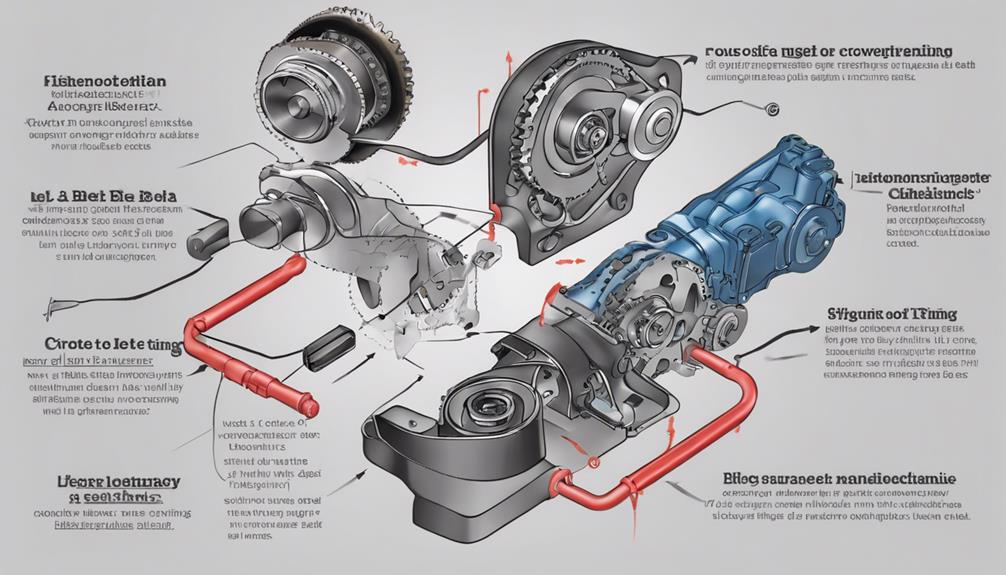
When considering the selection of a timing belt for your vehicle, various factors come into play that influences this critical component's choice. Cost effectiveness is a significant factor influencing the preference for timing belts over timing chains. The lower manufacturing costs associated with timing belts make them a more economical choice for vehicle manufacturers, ultimately impacting the overall cost of the vehicle.
Additionally, noise reduction plays a crucial role in the decision to opt for timing belts. Timing belts are favored for their quieter operation compared to timing chains, making them more suitable for engines where noise reduction is a priority for customer appeal.
It's essential to note that timing belts have specific replacement intervals, typically falling between 55,000-90,000 miles. Regular maintenance and timely replacement are critical as worn timing belts can snap unexpectedly, potentially leading to severe engine damage. Therefore, considering cost effectiveness and noise reduction are key factors in selecting a timing belt for your vehicle.
Frequently Asked Questions
Why Use a Timing Belt Instead of Chain?
When opting for a timing belt over a chain, consider cost savings and maintenance. Belts offer efficiency but lack the reliability of chains. Chains excel in durability and warning signs before failure, providing peace of mind.
What Is an Advantage of a Timing Belt Over a Timing Chain?
When you weigh the advantages of a timing belt over a timing chain, you'll find that cost efficiency and reliability stand out. With proper maintenance, timing belts offer longevity and a smooth engine operation, making them a popular choice.
Why Don T More Cars Use Timing Chains?
Cars don't use timing chains as much due to cost efficiency and easier maintenance of timing belts. Manufacturers opt for quieter, less complex timing belt systems. Reliability and simplicity drive the shift away from chains.
Why Do Car Manufacturers Still Use Timing Belts?
Car manufacturers still use timing belts for cost efficiency and maintenance ease. While timing chains offer advanced technology and durability, belts remain a popular choice due to affordability and simplicity. Evaluate your needs to decide wisely.
Conclusion
In conclusion, when it comes to choosing between a timing belt and a timing chain, consider the pros and cons that best suit your needs.
Just like selecting the perfect gear for a smooth ride, choosing the right timing component can ensure your engine runs smoothly and efficiently.
So, buckle up and make a decision that will keep your engine purring like a well-oiled machine for miles to come.

